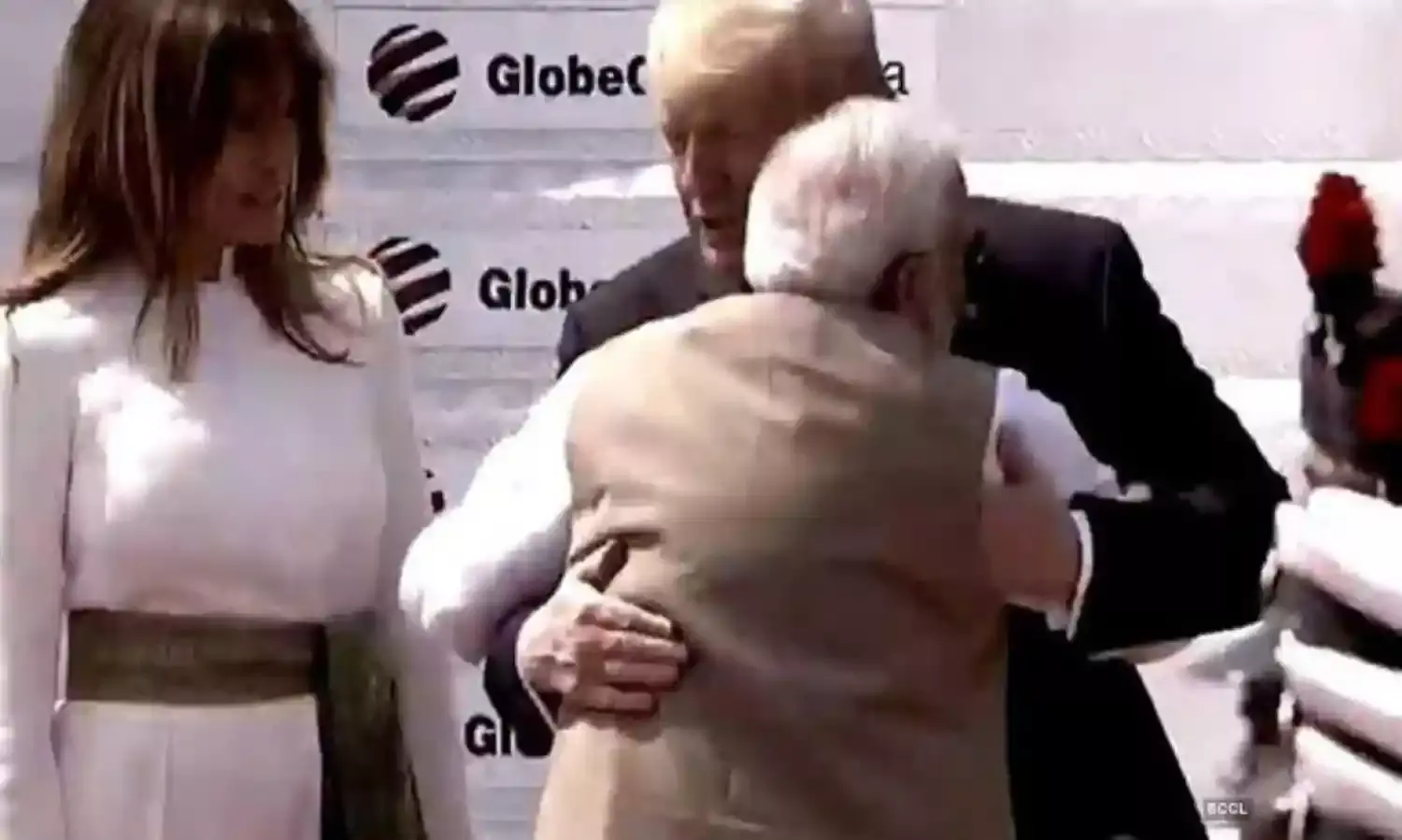'Trump Gets His Wall': Global Media Spotlights India's Poverty
US President Donald Trump kicks off 36 hour visit to India

As United States President Donald Trump arrives in Ahmedabad and kicks off a whirlwind 36 hour visit to India, international coverage of the visit has turned the spotlight to India’s sluggish economy and poverty. Much of the coverage leading upto the visit focused on a 1,640-foot long four-foot high wall built in Ahmedabad along a part of the President’s journey from the airport into the city. Its purpose: To hide a stretch of slums on the American President’s route.
An article on the wall in Bloomberg puts the visit it in the context of India’s slagging economy, saying that “the extravaganza comes during an election year for Trump and as Modi grapples with a sputtering economy and growing social unrest against his government’s aggressive push of new policies seen by many as discriminating against Muslims.”
“Part of the makeover in the city is a more than 1,300-foot-long wall that's being built along Mr. Trump's route from the airport to Motera Stadium that will block his view of a slum area. Some residents of the neighborhood have also alleged they have received "eviction" notices from authorities,” a report in CBS News states. The same report locates the visit in the context of India’s political and economic developments, saying: “Mr. Trump's visit comes as Modi is facing an economic slowdown and some of the most serious public protests ever over a new citizenship law that is widely seen as discriminatory to Muslims and a plan to count every resident of the country in a register of citizens that will potentially render millions stateless.”
“Modi has also faced international criticism for his government's sudden move in August to strip the Kashmir region of limited autonomy, placing its elected leaders under detention and putting the entire population under a security and communications lockdown for months. If nothing more, Modi's government would like to showcase the U.S. president's visit as an international approval of his policies at home.”
The New York Times published a video feature on the wall with the caption, “Residents and protesters criticized the construction of a wall being built in front of slums in Ahmedabad, India, where President Trump is scheduled to visit.”
A report in the Washington Post quotes residents of the slums that the wall hides: “Now the number one country is coming, so as per the number one standards, they built the wall,” said Vikram Rathod, 40, a laborer who lives in the slum. “They have decided that poor people should not be seen.” The reports adds that “it appears few substantive accomplishments will be announced during Trump’s visit. India and the United States have failed to conclude even a minor agreement to resolve some of their trade differences, despite more than a year of negotiations and repeated assertions that a deal was close.”
“A half-kilometer (1,640ft) brick wall has been hastily erected in India’s Gujarat state ahead of a visit by Donald Trump, amid allegations that it was built to block the view of a slum area inhabited by more than 2,000 people,” the Guardian reports. “Trump, who has pledged to build a wall along America’s border with Mexico to stop people from entering the US, is visiting India on 24-25 February. His visit is aimed at smoothing ties strained by trade disputes and could also allow him to woo tens of thousands of Indian American voters ahead of the US presidential election.”
Describing the visit as “big on pageantry but short on policy” a report in DW notes that “Trump's three-hour visit to Ahmedabad may cost civic authorities $13 million (€12 million), according to some estimates. This includes a wall built to hide one of the slums adjacent to the road expected to be used by Trump.”
Quoting DW’s Sonia Palniker, the report says that “this visit is also important in terms of optics for for Prime Minister Modi, Phalnikar continued, "who has been facing large scale protests at home but also international criticism abroad for a controversial citizenship law which some say undermine India’s secular traditions."”
A detailed report in NPR locates the visit in the context of the 2002 Godhra riots, ending with the following paragraph: “That development is what Modi aims to showcase when Trump visits Monday. It's his legacy. But so are the divisions. One place Trump has no plans to visit while in Ahmedabad is the sprawling Juhapura neighborhood south of the riverfront, with its dusty, unpaved roads, tangles of electricity wires and laundry draped across balconies. It's where the widow Abeda Khan and thousands of other Muslims took refuge after the 2002 riots. Eighteen years later, most of them still live there, segregated, unable to forget.”



